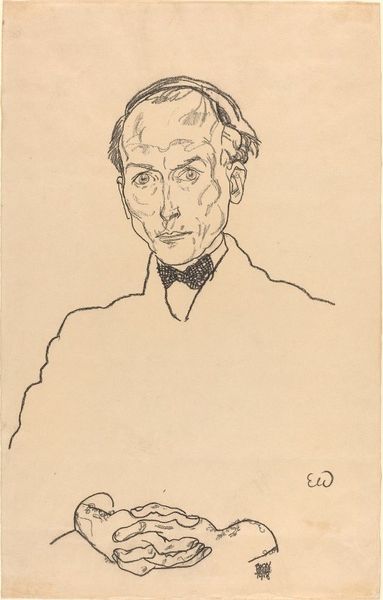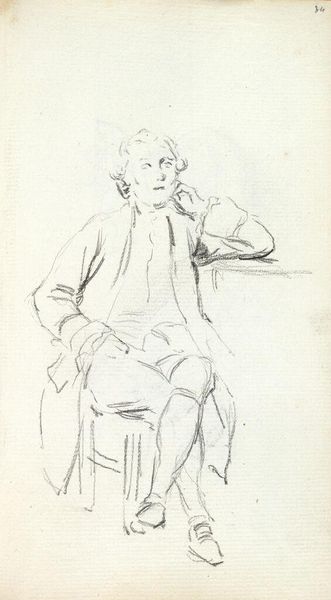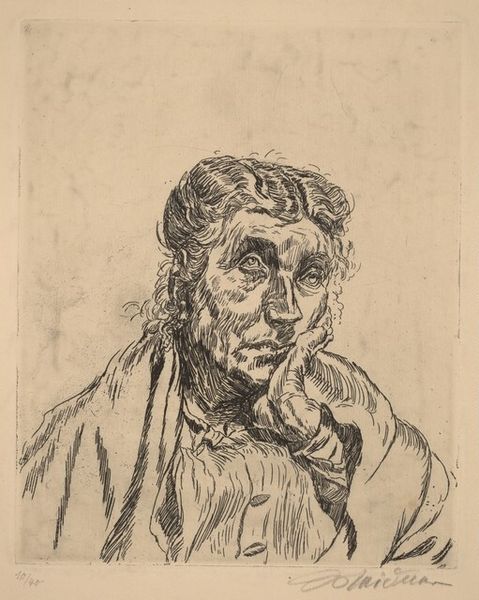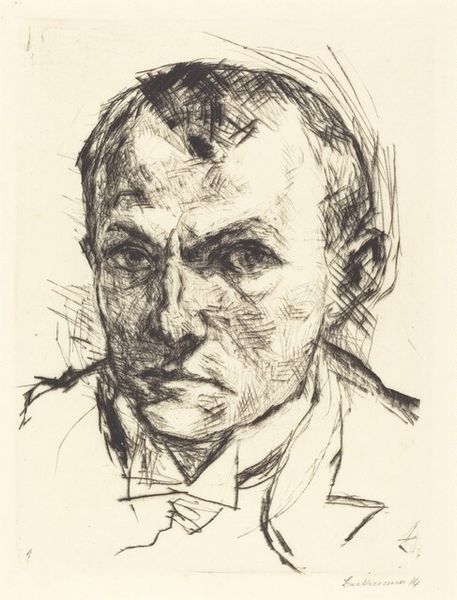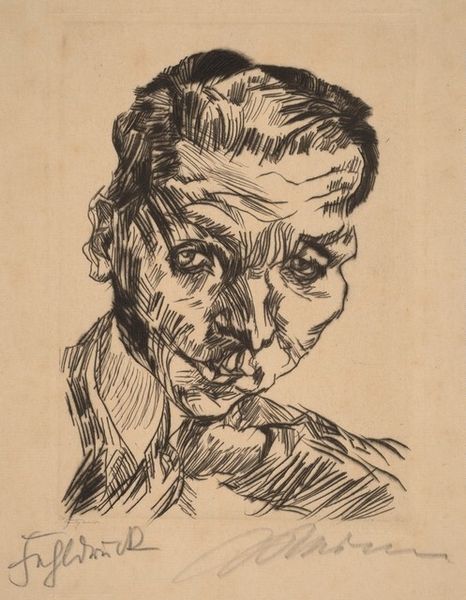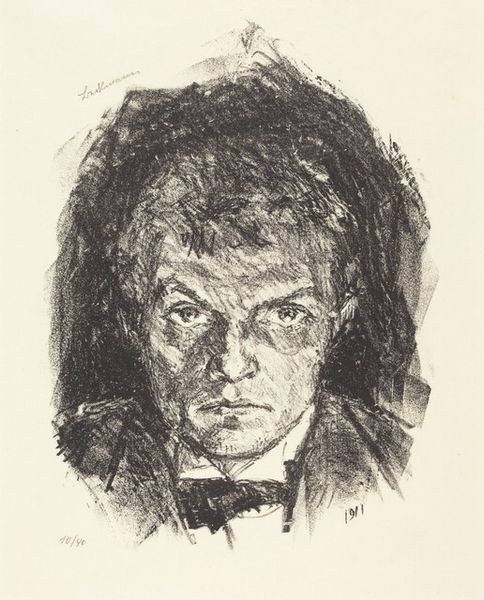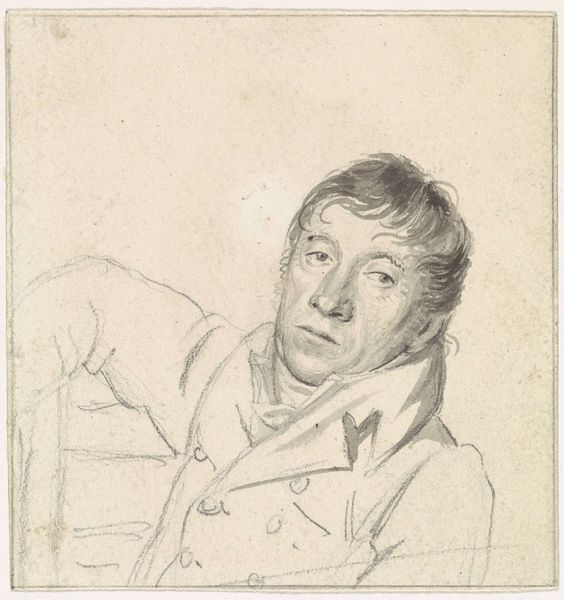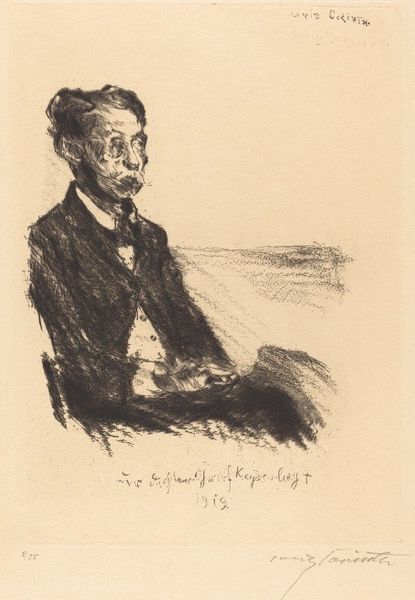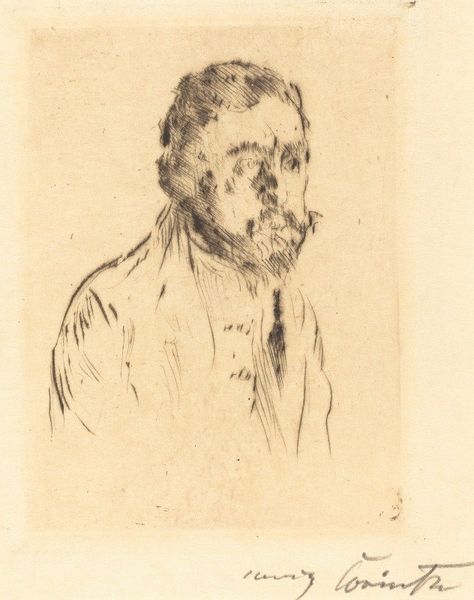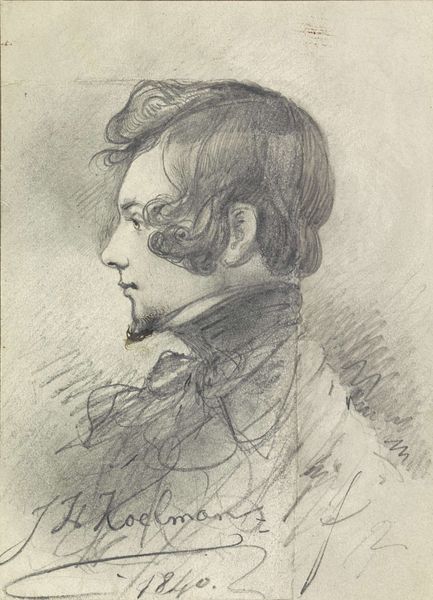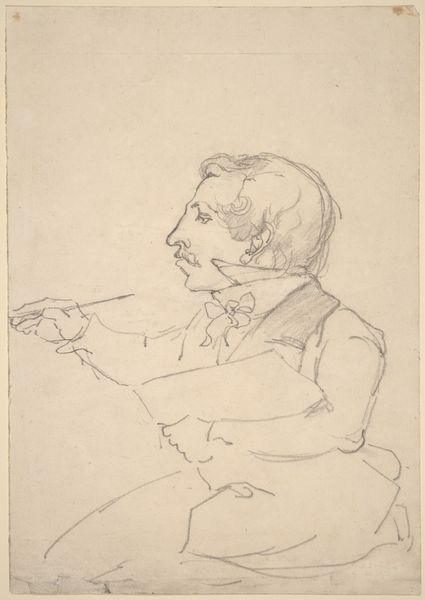
drawing, paper, pencil
#
portrait
#
drawing
#
pencil sketch
#
german-expressionism
#
paper
#
pencil drawing
#
pencil
#
expressionism
#
portrait drawing
Copyright: Public Domain: Artvee
Curator: Alright, let's spend some time looking at this portrait by Lovis Corinth from 1922. It's a drawing of Erich Goerlitz rendered in pencil on paper. What strikes you initially? Editor: Well, there's an immediate vulnerability. It’s a face laid bare with such directness—the weight of thought etched right onto the paper with that graphite. It almost feels like I'm intruding on a very private moment. Curator: Exactly! The beauty of drawings—the intimacy, isn't it? Think of the paper it's on—that fibrous stuff. Ground wood transformed, pressed, bleached perhaps, and then marked by hand, a very human act that mirrors Goerlitz's own humanity. Do you get that feeling? Editor: Definitely, and that immediacy—you can practically smell the pencil shavings, the workshop! These aren’t refined lines; there’s a rawness, a sketched quality that showcases process. It disrupts any illusion; reminds us of its manufactured state. Curator: I'm picking up on something darker too, even just from the man's eyes and tightly pressed lips. I wonder what Goerlitz might have been thinking at the time of sitting... I mean, 1922 in Germany... I'm sure it felt like the world was just beginning to fray, bit by bit. Editor: It makes me question the social context too. The artist and subject, both reliant on the availability of industrially produced pencils and paper. How does this influence the nature and spread of portraiture in society? Was it just for elite clients, or could the process itself hint at a slowly democratizing world? Curator: I find myself fixated on Corinth’s mark-making. He’s captured more than a likeness—he's suggesting character, turmoil, the weight of his experiences... everything somehow pulled out of those gradations of grey. Editor: It does make me think about that whole tradition of portraiture, and where this piece situates itself in that framework. Rather than idealizing, Corinth is presenting an honest depiction through fairly basic and accessible means. And it begs to know what kind of labor went into each part: crafting the paper, extracting and shaping the graphite… Curator: And from Goerlitz's perspective... posing for a German Expressionist! Maybe, deep down, Goerlitz wanted some of that chaotic energy to be rendered—the fractured reality they were living in to come out through those restless lines. It all accumulates and bursts. Editor: Exactly! Every stage of this process, from tree to sketch, reveals decisions reflecting cultural values. It really emphasizes that everything has a material past that reflects the human values of its day. Curator: Thank you, a truly material way of approaching the art piece, so unexpected, and really enriching. Editor: I agree; I felt that together we understood how the social meaning around resources changed this piece from just a drawing to some form of commentary.
Comments
No comments
Be the first to comment and join the conversation on the ultimate creative platform.

